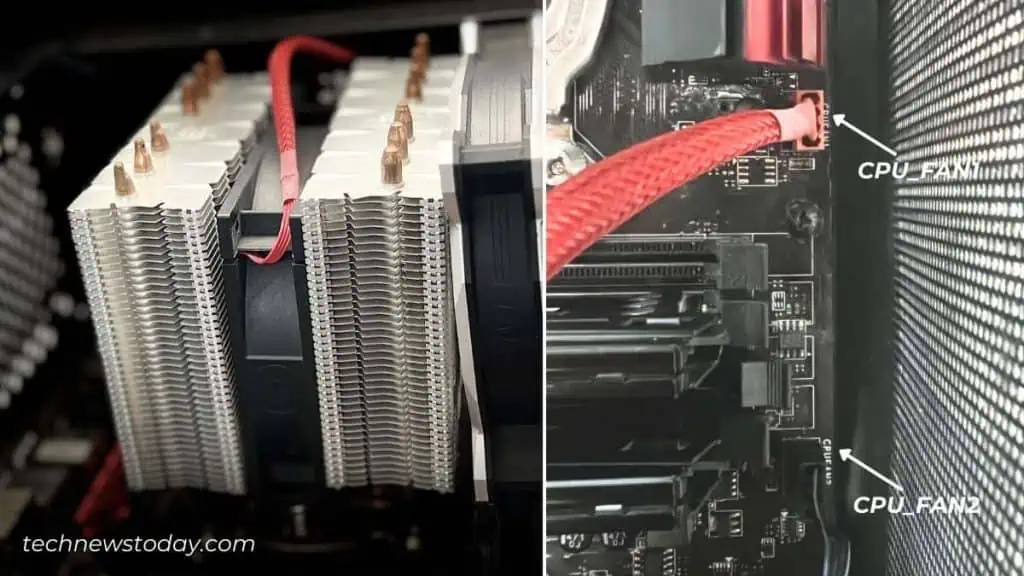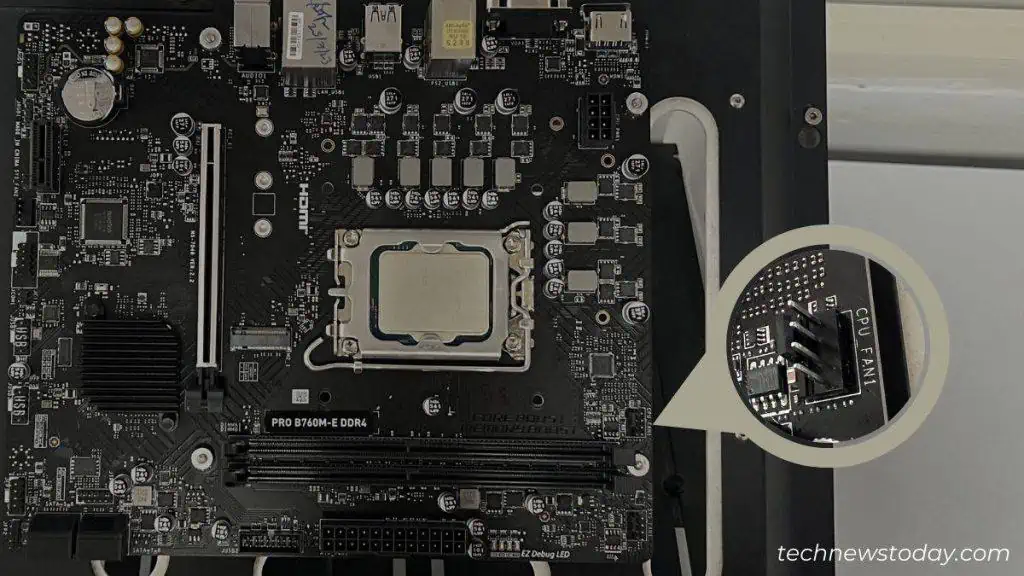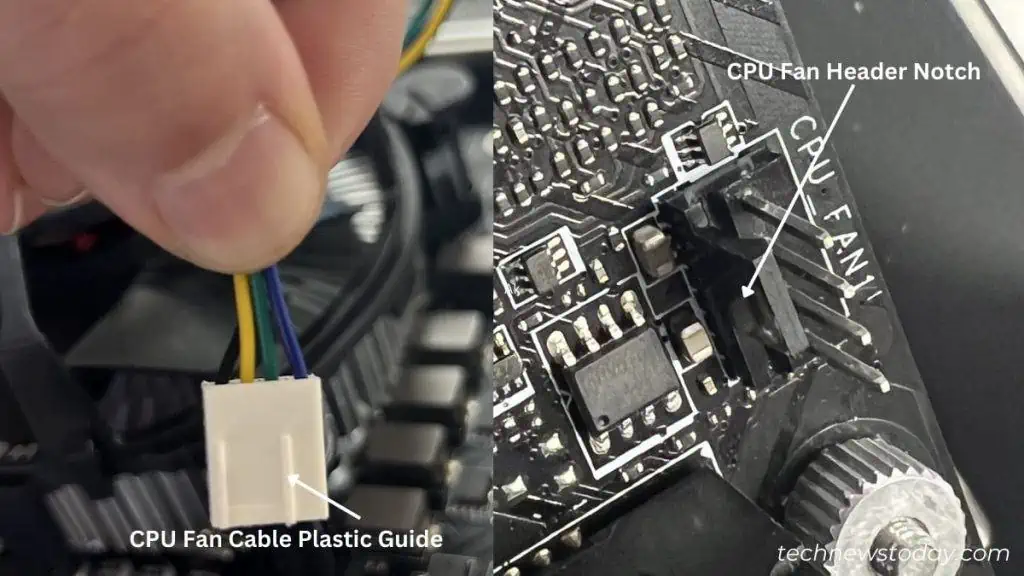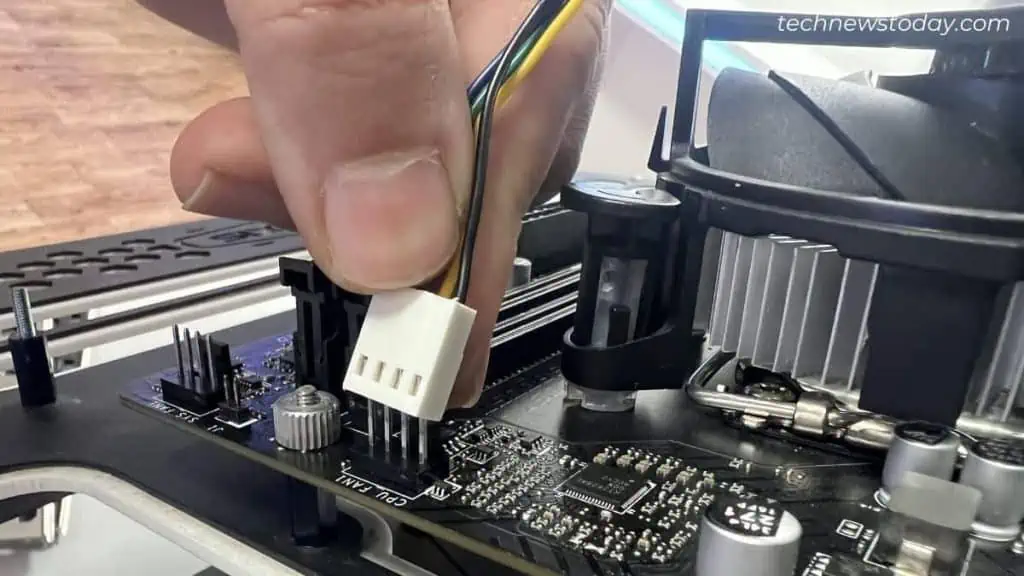Afterinstalling a CPU cooler, your next task is connecting its cable to the CPU header. Without it, the fans won’t spin, which ultimately leads toCPU overheating.
In fact, most systemswon’t let you boot up. They will throw some forms ofCPU error messages.
Clearly, your processor fans must be running and for that, a dedicated motherboard connection is required. But other identical headers, likeCPU_FAN2orCPU_OPTmight confuse you.
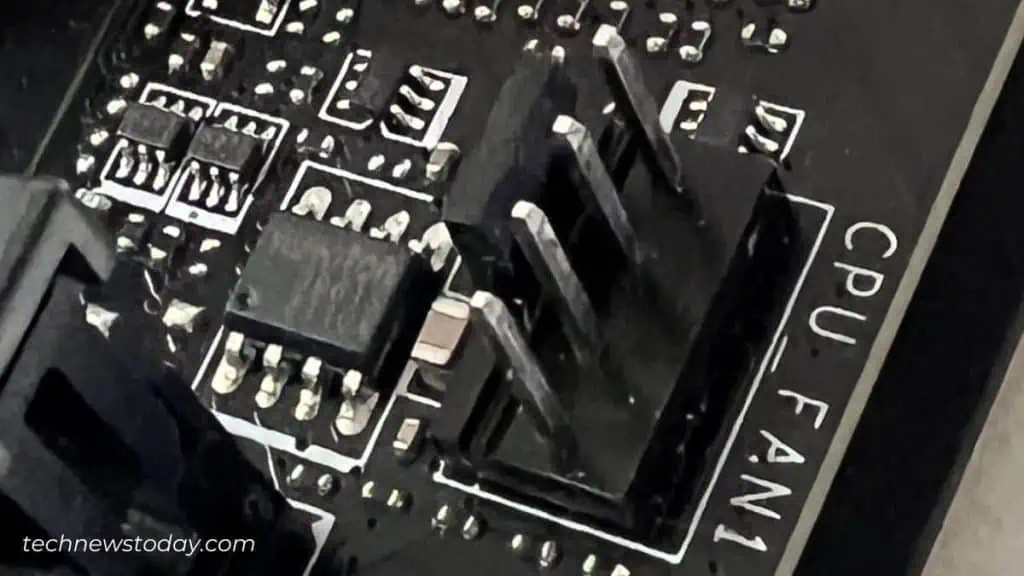
Ever wondered what would happen if you connected the fan cable to a chassis/system/pump header? Let’s find out.
CPU Fan Header Pinout – A Brief Overview
Most modern motherboards embed 4-pin headers but the older ones may only come with three pins.
The main difference between them is the extra fourth pin, which offersbetter speed customizationusing pulse-width modulation(PWM). DC fans(those with three pins) usevoltage changesto regulate the speed. Meaning, it doesn’t offer as precise control as the former.
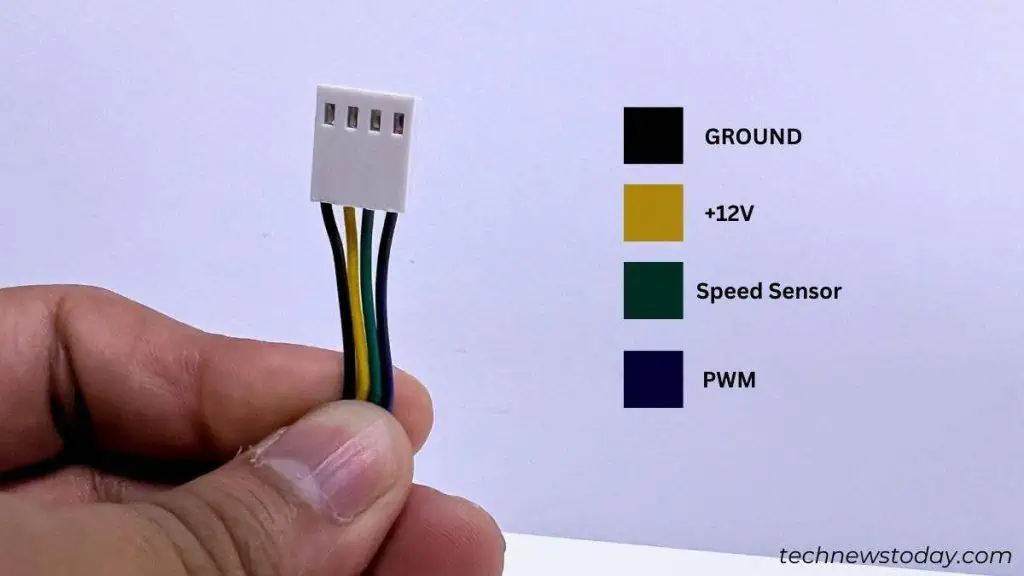
Despite the differences, you may still connect a 3-pin to a 4-pin connector and vice versa. Just understand that the fourth wire will remain unutilized and thePWM fan will work in DC mode.
The pinout I’m referring to isn’t limited to CPU_FAN. This case holds true for all the fan headers. Let’s take a closer look at it:
To connect your CPU fan to the motherboard, it’s essential tomatch the male and female plugs. The ground connector of the fan cable should align with the ground pin of themotherboard header.
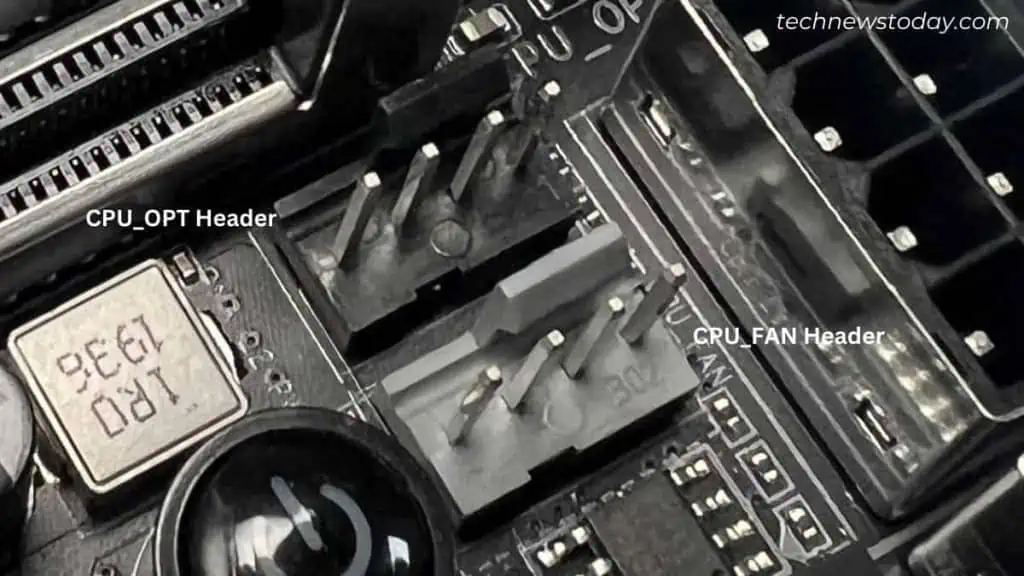
Usually, most fan cables follow a standard color coding to differentiate the wires. Ground is alwaysBlack, +12V can beRed/Yellow, Speed Sensor isYellow/Green, and PWM should beBlue.
Fans generally consume200 to 300mA current. This means any header can provide enough power for them to run.
Technically, you may connect your CPU fan to even theOPT_FANorSYS_FANheaders. Joining case fans toCPU_FANis also acceptable.

But that’s definitely not the thing that professionals do. Manufacturers have a purpose for why they have assigned separate headers. So, the question stands – which header to choose and when?
When to Choose CPU Fan and CPU OPT?
